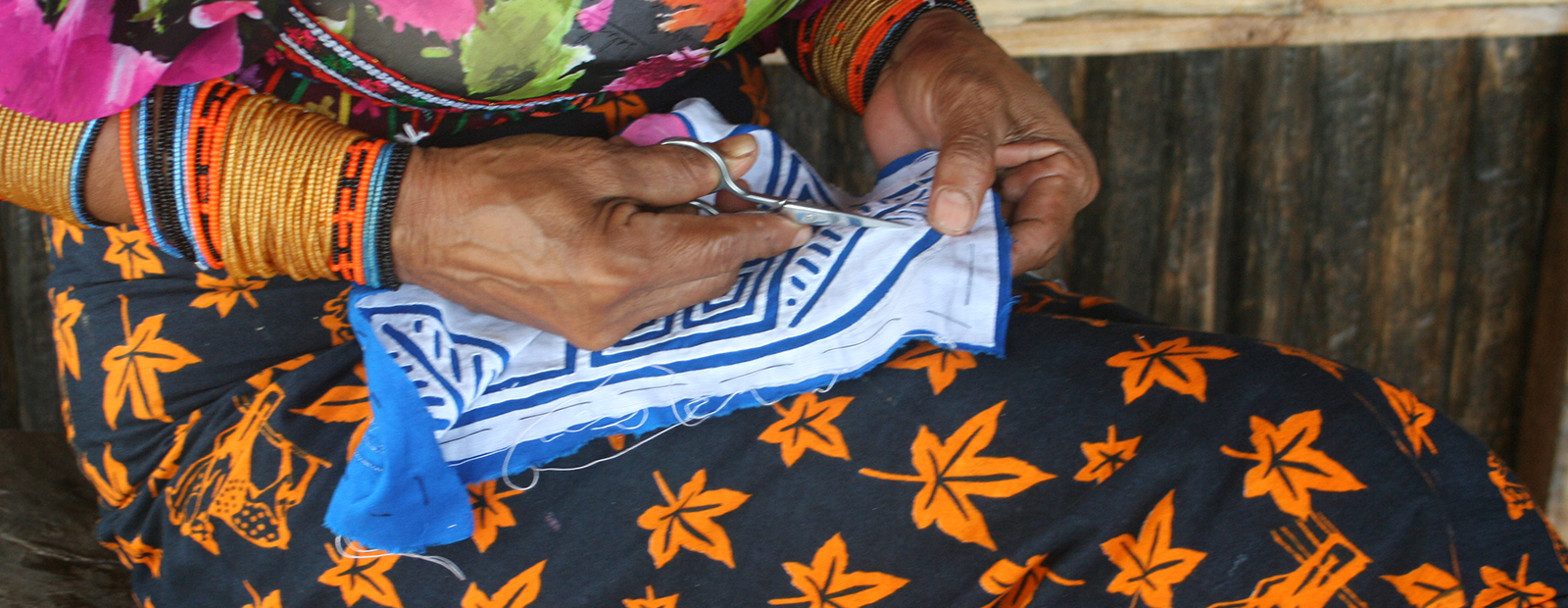Dulemola, commonly known as mola, can be understood as artistic testaments to resiliency and adaptation. Created by Guna women on the northern coast of Panama, these colorful cutwork pieces embody both tradition and innovation.
When the Spanish colonized the region, missionaries required that Guna women adopt European standards of modesty by wearing blouses. The women responded by creating an entirely new type of blouse that combined the gathered sleeves and yokes of European blouses with colorful “cut-work” panels forming the fronts and backs.
To create these panels, layers of colored cloth are pierced in myriad designs and patterns, revealing the colors underneath. Such a blouse, and the cutwork panel itself, is known in the Guna language as a dulemola. Many of the cutwork patterns are inspired by the traditional bodypainting designs the blouses were meant to cover.
With their standards of modesty, Spanish missionaries also introduced brightly colored machine cloth, commercial thread, and scissors to the Guna. They may have expected Guna women to adopt the European tradition of quilting, but the tropical climate made such heavy coverings unnecessary and, instead, the Guna used the tools to create a wholly new textile art form.
We've created a puzzle from an image of a self-referential dulemola that celebrates the scissors that made its creation possible.
Click here to see the mola.
Note the following as you complete the puzzle:
- Multiple pieces of cloth are layered and cut through with scissors. The cut edges are turned under and sewn down, revealing the colors beneath in a variety of patterns that include intricate geometric designs, flora and fauna from the natural world, images derived from popular culture and sometimes, a combination of all of these.
- Notice the way the scissors seem embedded in a series of colorful, geometric designs. This same aesthetic of figure-ground ambiguity is seen in other dulemola, but also in ancient Panamanian ceramics in the museum’s collection. Notice the similarities in treatment between the scissors in the mola and the praying mantis in this ancient ceramic plate.





